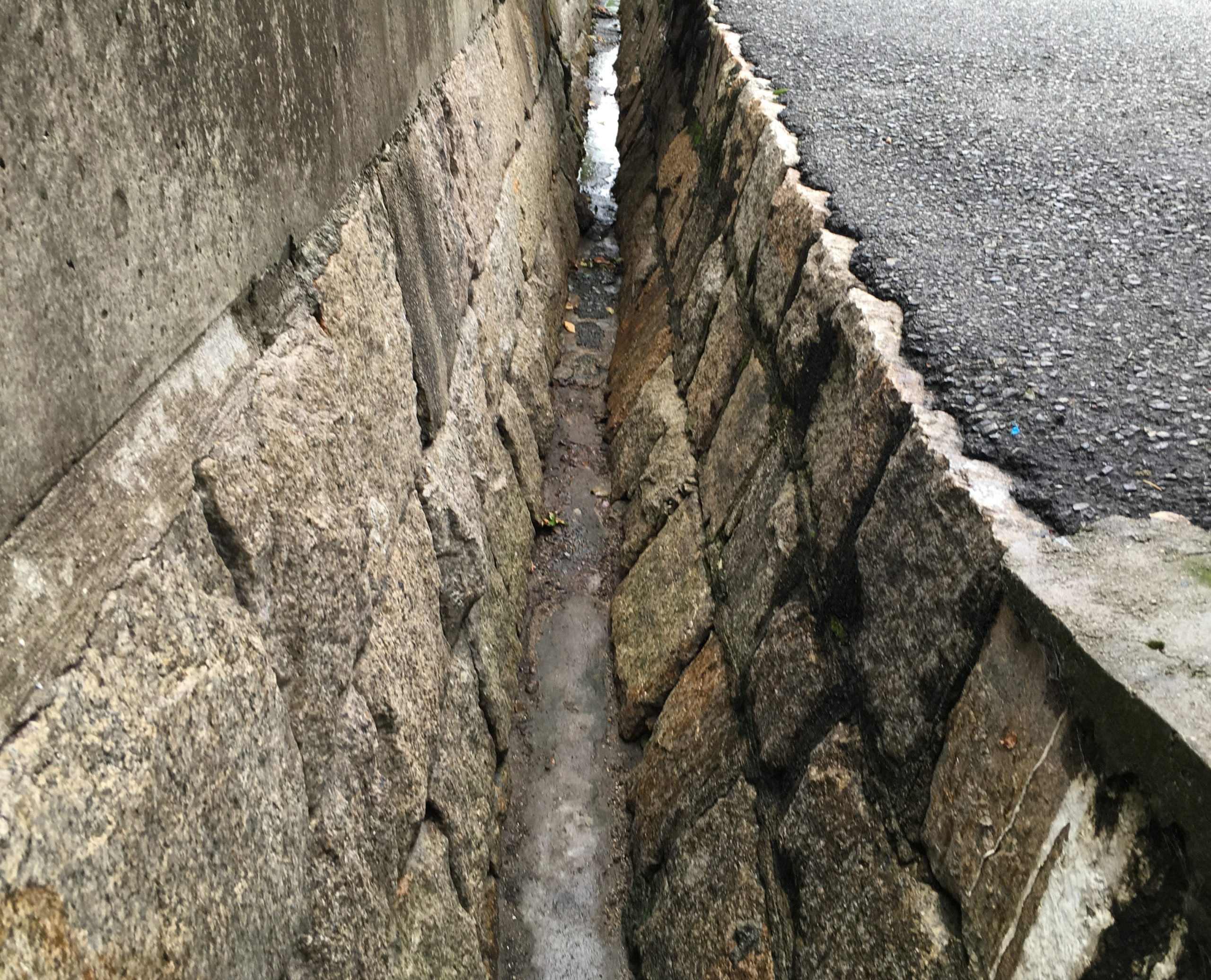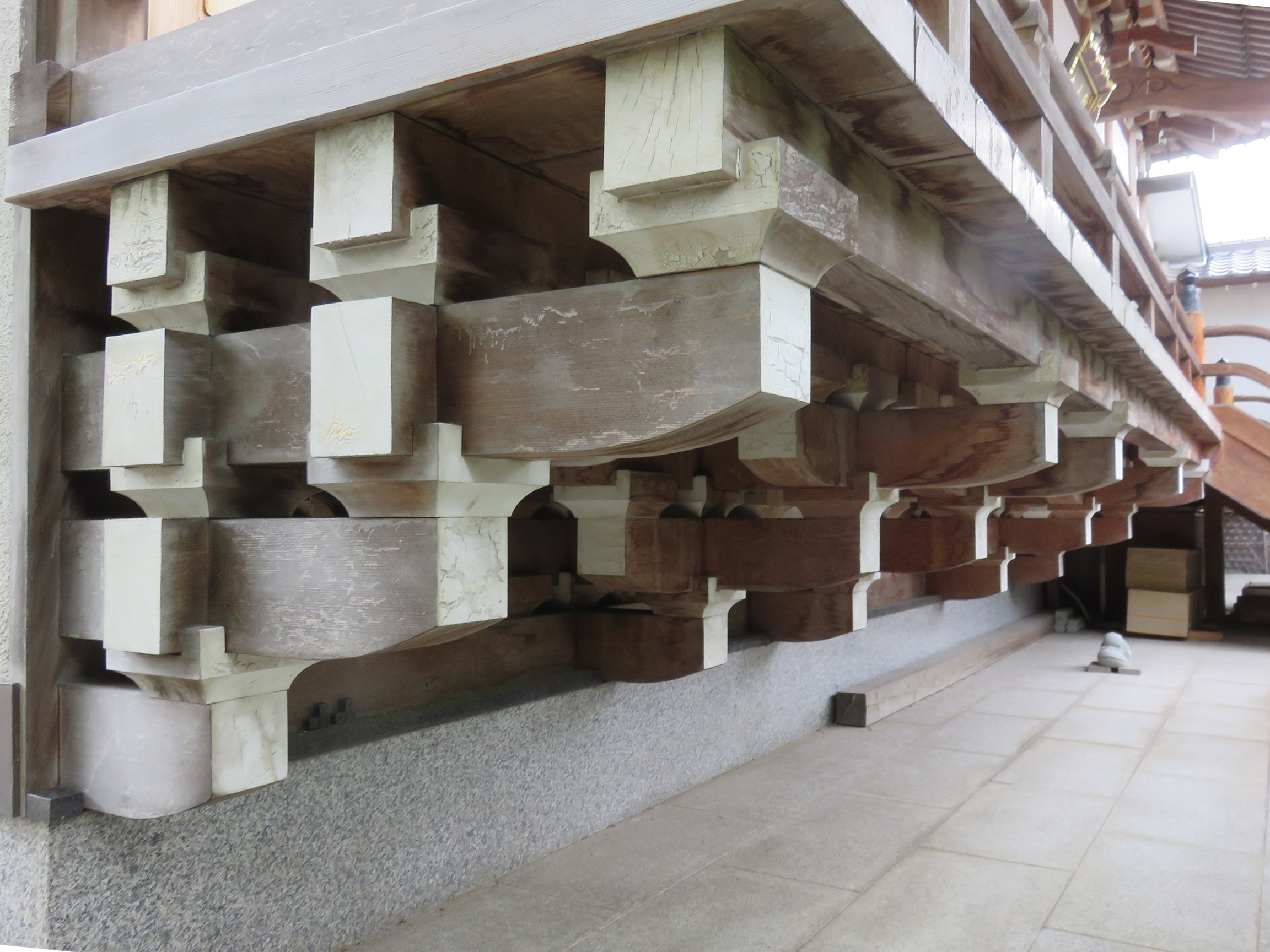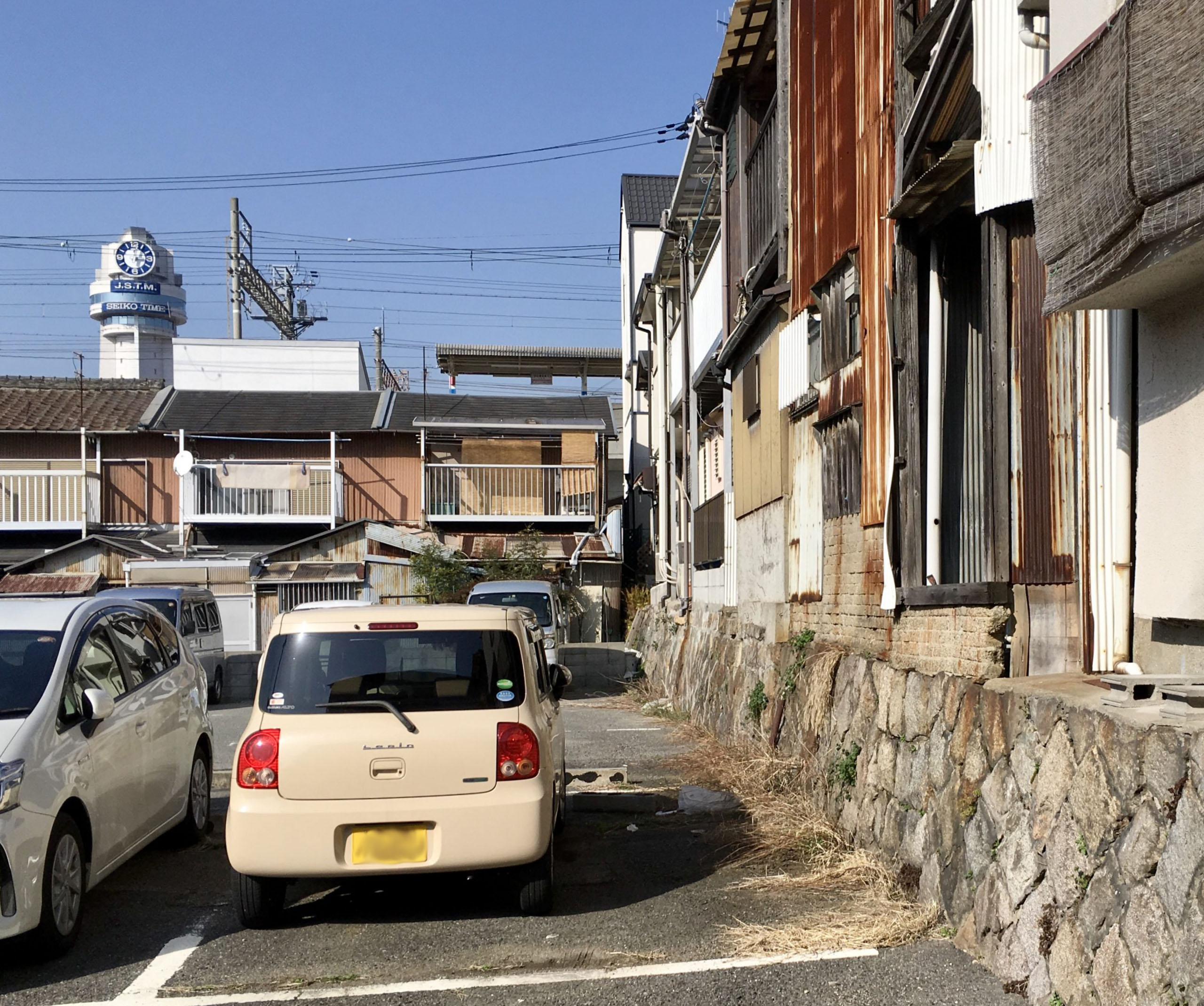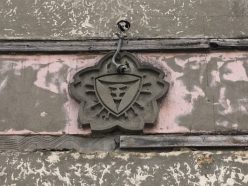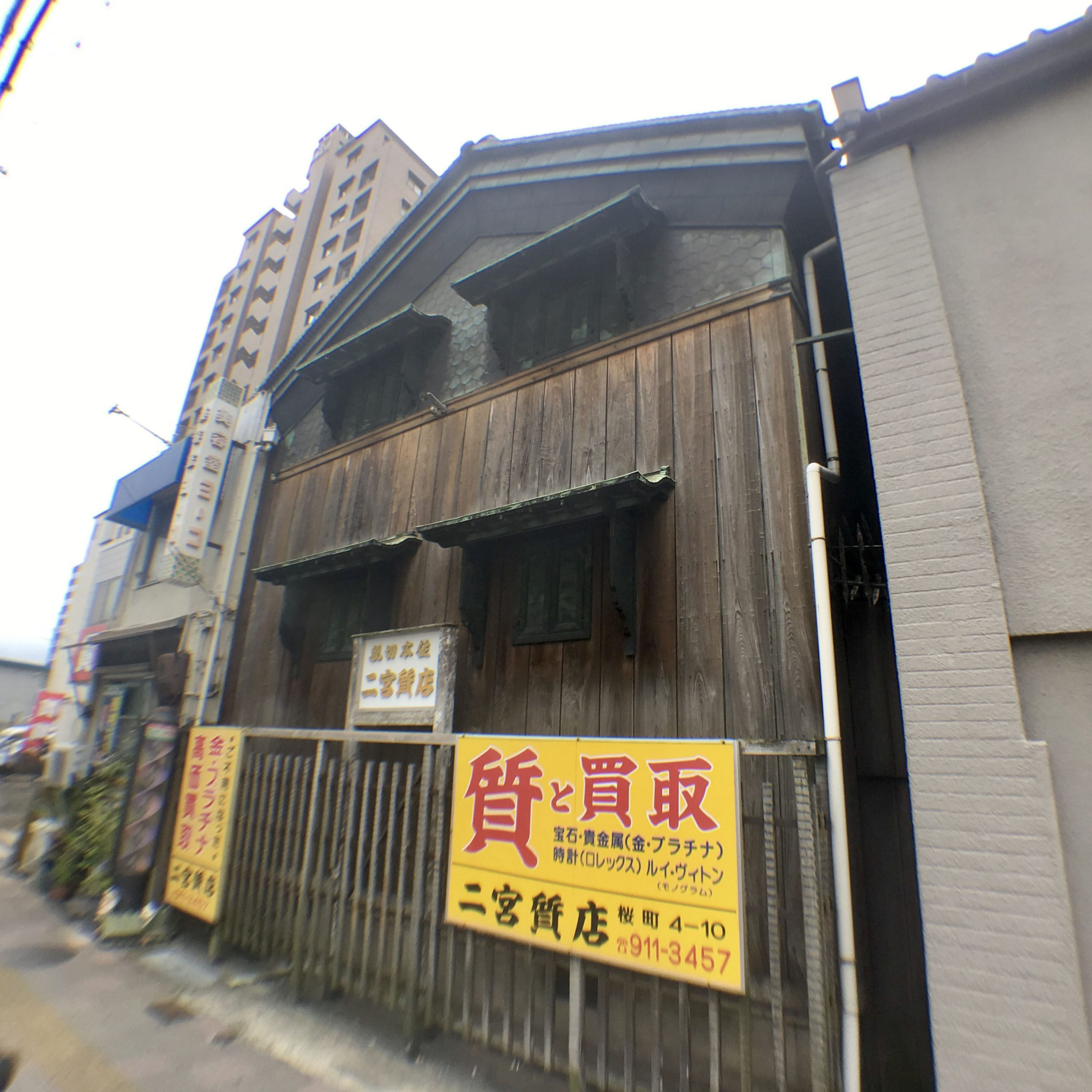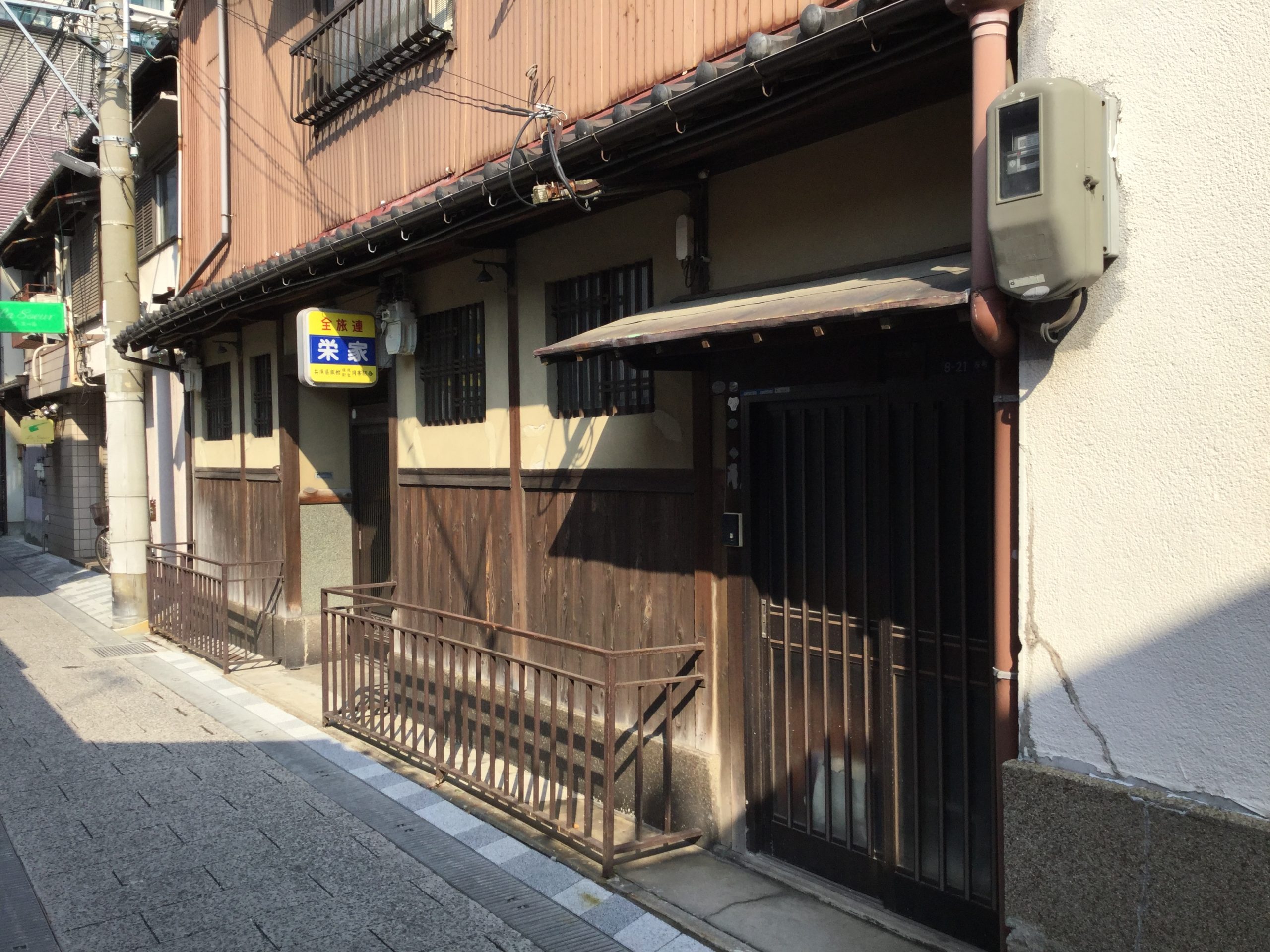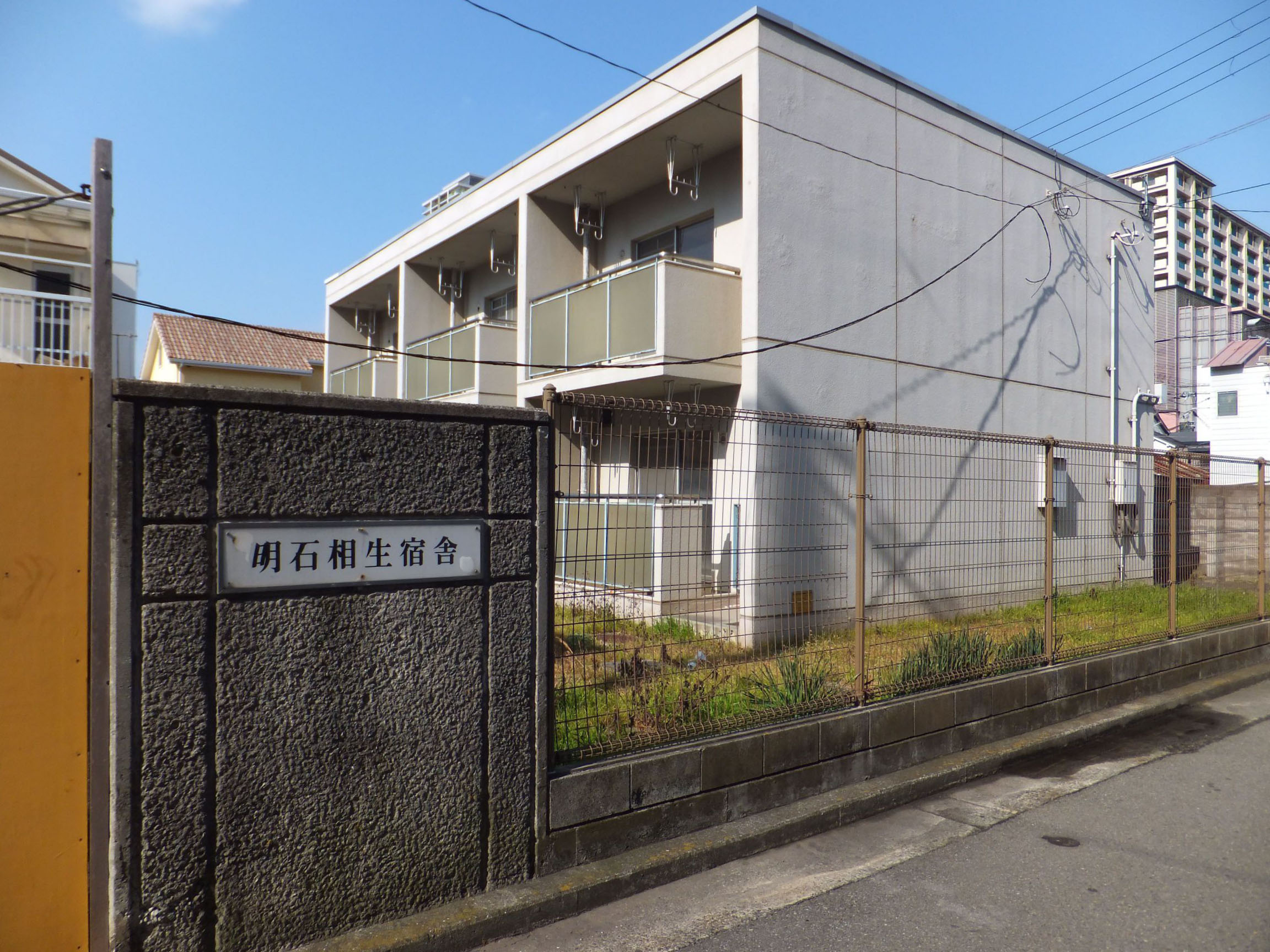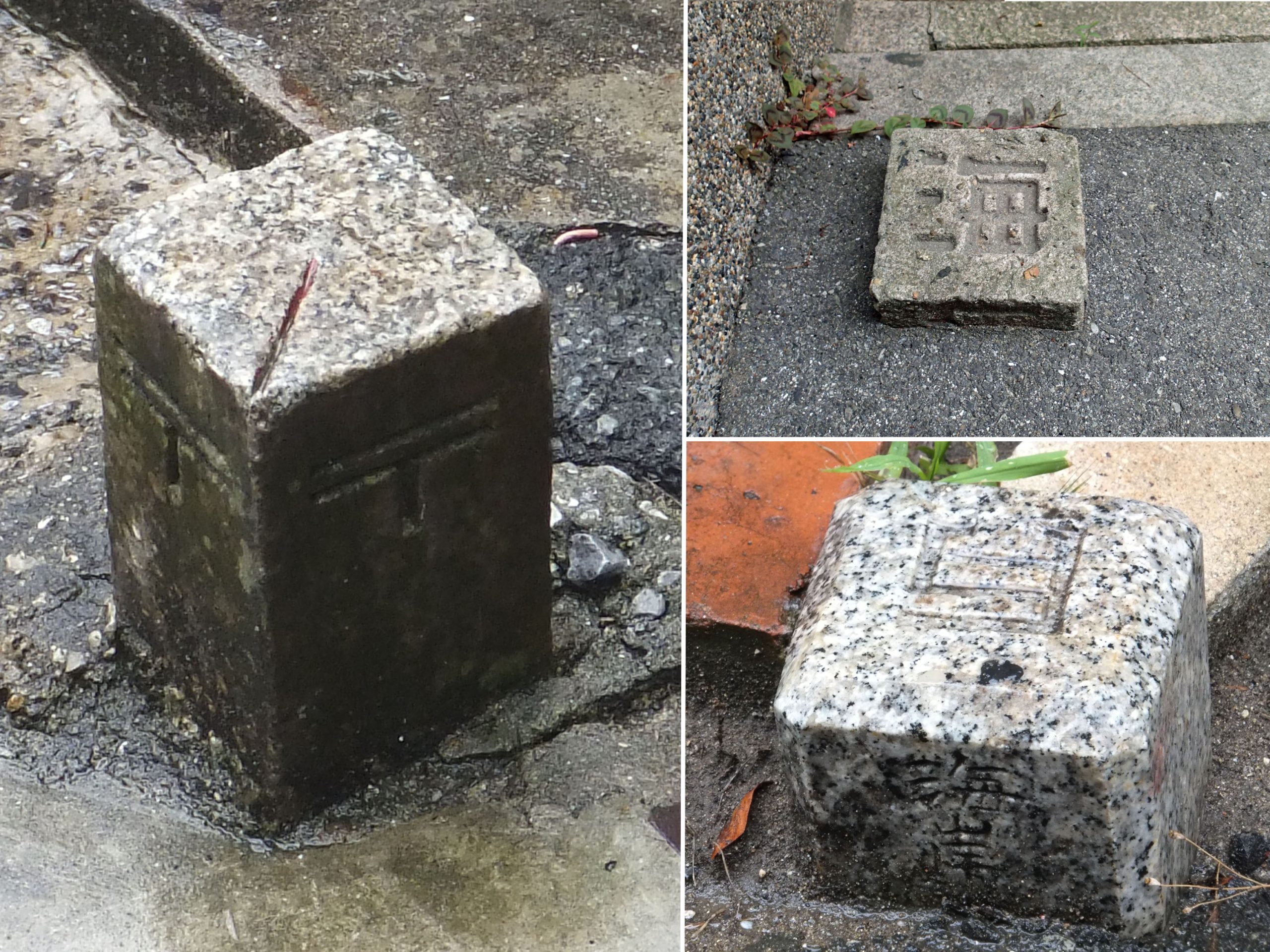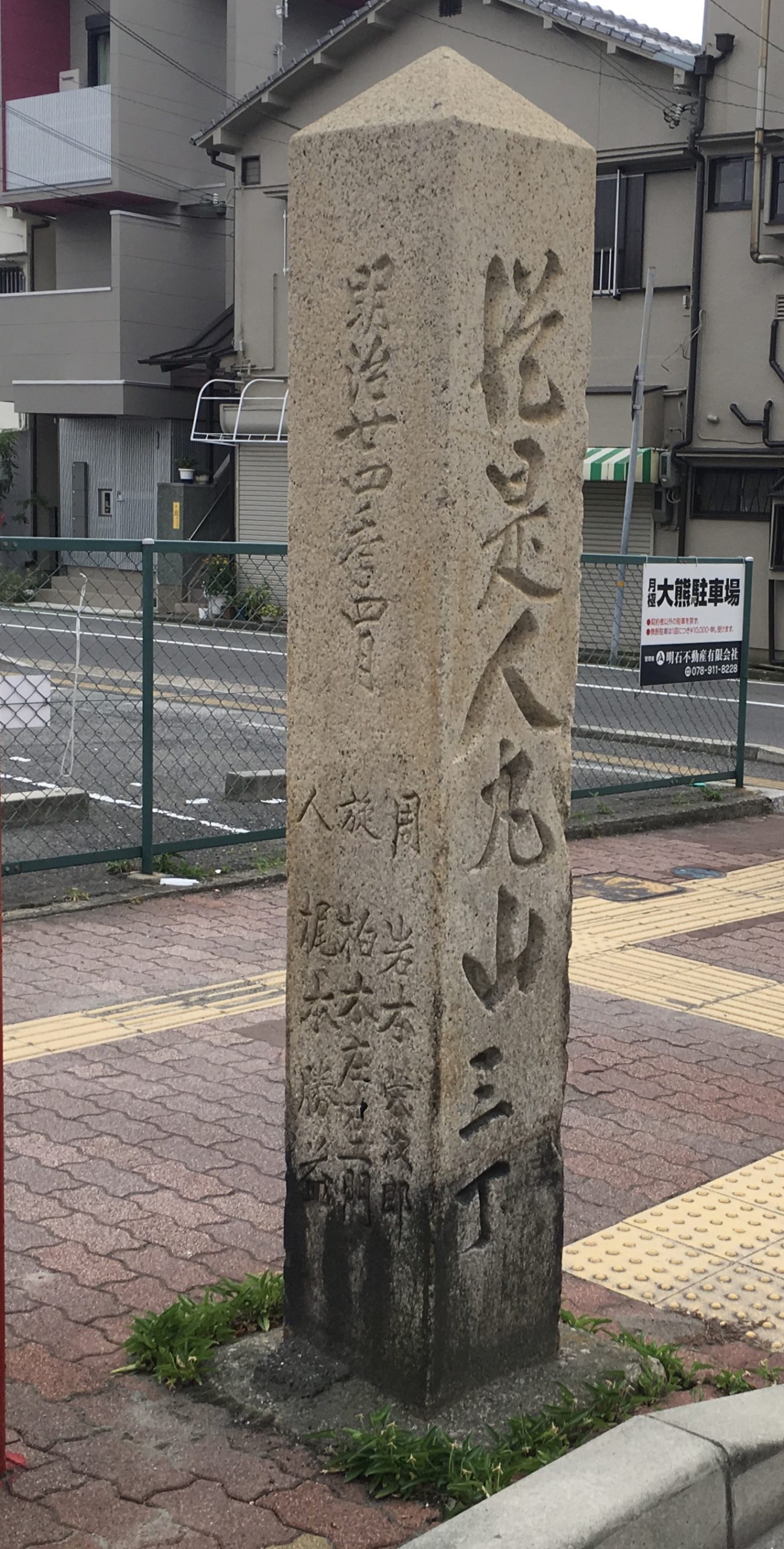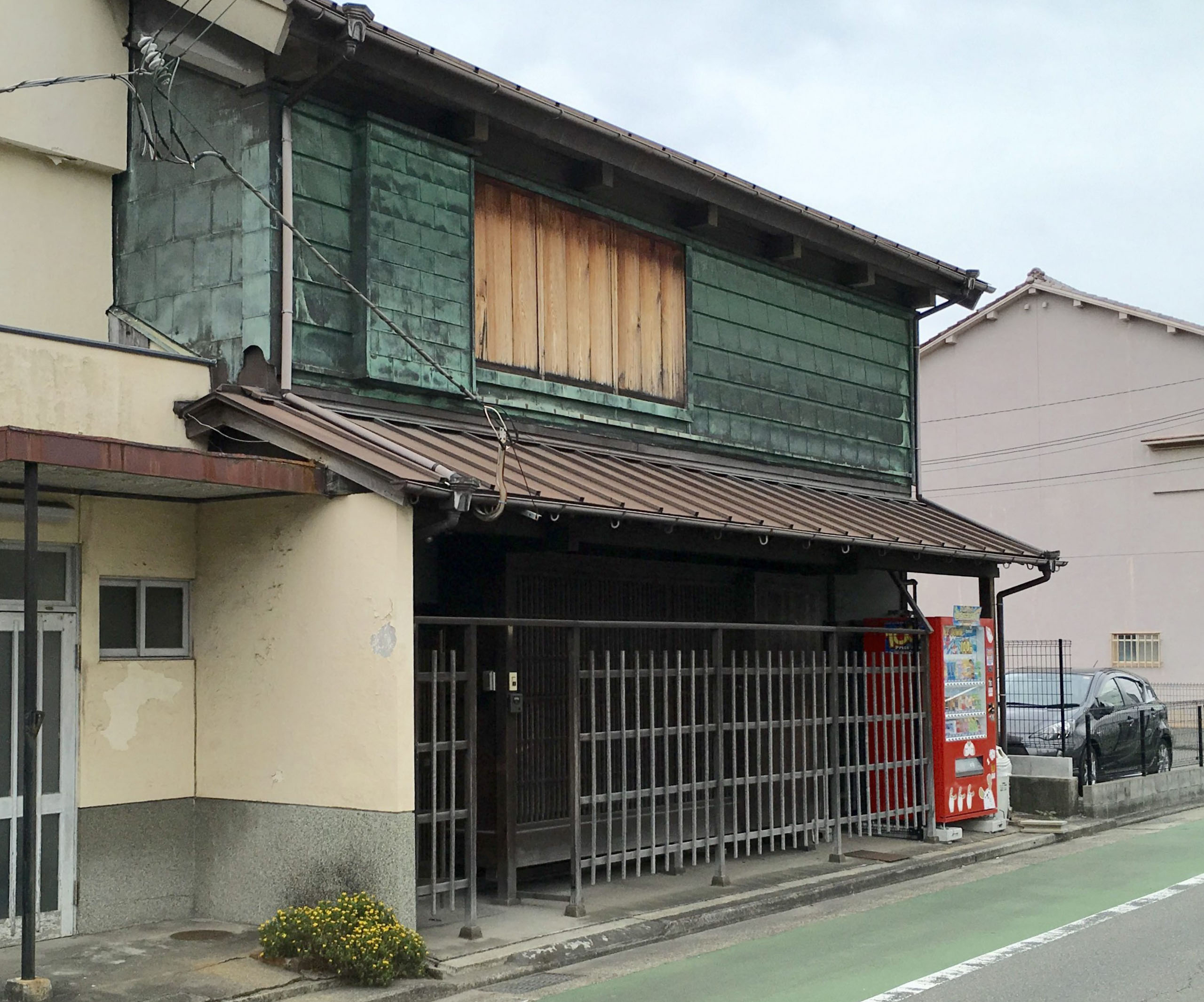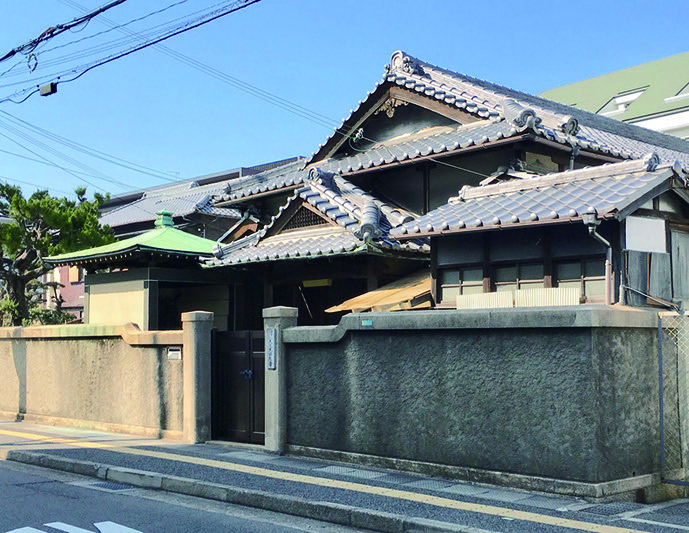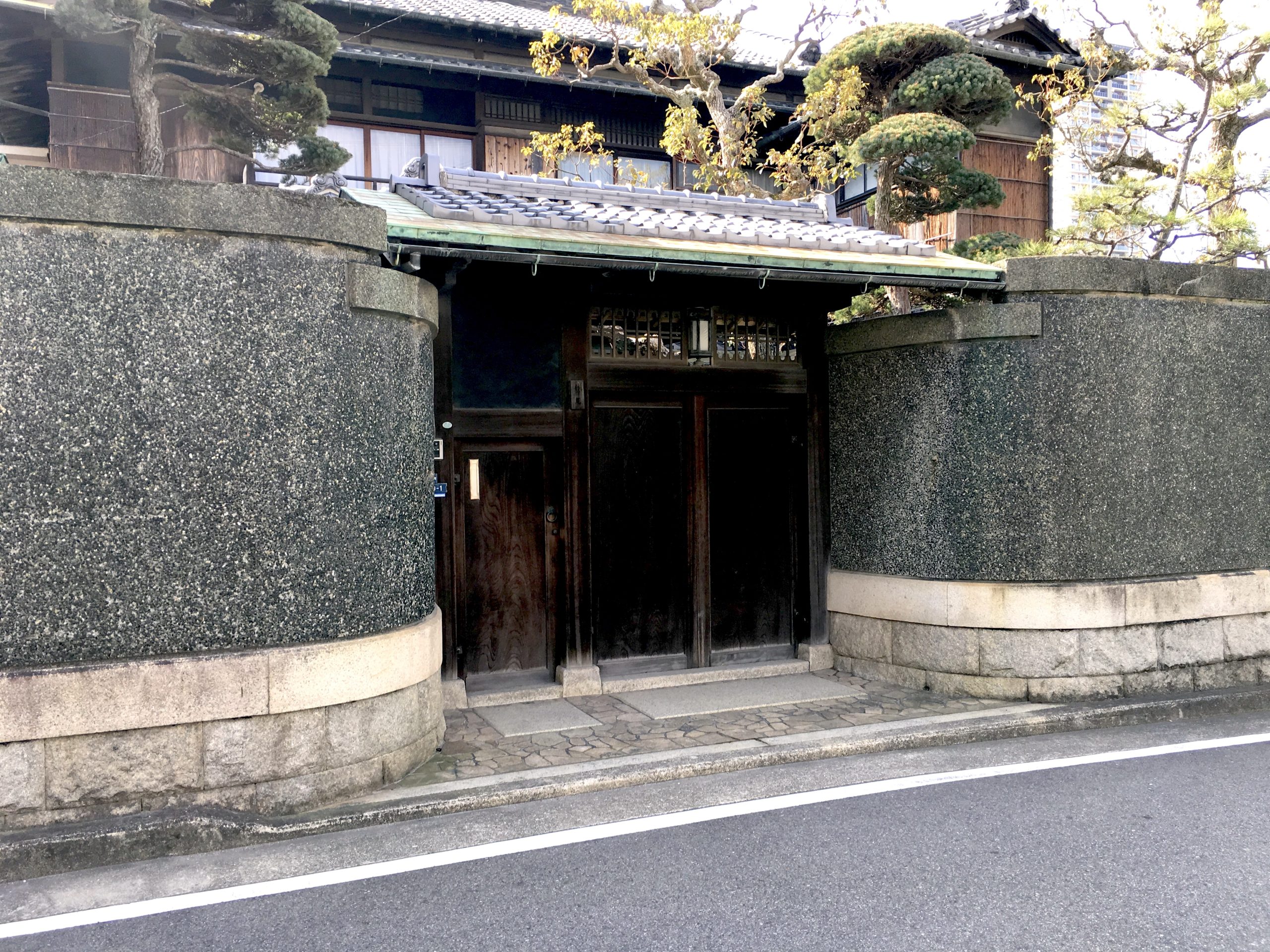
Hitomaru
25.The combination of Japanese-style gate and Western-style wall
The gate of this house is tea-ceremony cottage style that has the roof of combination of Japanese clay tile roofing and sheet copper roofing, and the door made of zelkova. We see the range ashlar masonry of quarry face granite for the wall base, polished face granite for the sill and the curved wall finished by washing finish of greenschist. This is a great work of combination of Japanese and Western-style.
